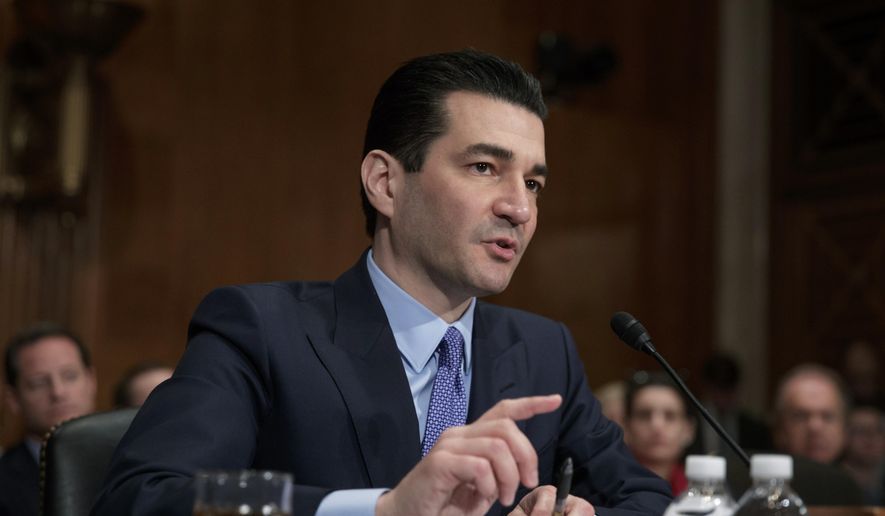The Food and Drug Administration issued guidance Tuesday to push drugmakers to craft cheaper generic painkillers that are more difficult to snort, inject or otherwise abuse than standard opioids.
FDA Commissioner Scott Gottlieb said it’s part of his push to get doctors to look at drugs less susceptible to abuse, amid the growing opioid epidemic. His agency wants to promote alternatives to expensive name-brand pain relievers.
“Some prescribers may not be aware of the existence of these drugs, or may be uncertain of when to prescribe the abuse-deterrent versions. But we also know a significant barrier to use can be price,” Dr. Gottlieb said.
Tuesday’s guidance gives drug companies advice on how to prove their generics are just as good at avoiding abuse as the brand-name drugs.
President Trump recently declared the epidemic a public health emergency, ordering agencies to expand the number of treatment beds, crack down on traffickers of synthetic opioids like fentanyl and explore new ways to treat pain.
A White House report this week said prescription opioid and heroin overdose deaths have been underreported and likely killed more than 41,000 people in 2015 — up from an official count of 33,000 — and cost of half a trillion dollars when accounting for the full value of lives lost, plus medical treatment and court proceedings for those who survived their drug abuse.
Senate Democrats want Mr. Trump to dedicate $45 billion in taxpayer funding toward the fight, though the administration hasn’t said how much money it will request from a year-end spending package to support its anti-addiction efforts.
In the meantime, agencies within the administration are exploring steps they can take on their own.
The FDA said it will help companies navigate the regulatory process by clarifying its expectations for abuse-reducing generics upfront, so they can get faster approvals.
It is also studying whether the term “abuse-deterrent” accurately conveys what they’re trying to do, since these drugs are not “abuse proof” and can still lead to addiction, overdose or death.
Dr. Gottlieb also said no one should construe the push as an effort to encourage opioid use, since the agency is trying to reduce unnecessary or illicit use of the powerfully addictive drugs.
“Rather, this is an effort designed to encourage the shift — only when opioids are clinically appropriate — from existing, easily abused products to those that are harder to manipulate,” he said.
Earlier this year, the FDA asked a pharmaceutical company to stop selling its opioid product, Opana, because too many people were abusing the drug by injecting it, leading to the spread of viral infections, such as HIV.
It was the first time the agency had taken steps to remove an opioid-related pain medication from the market over concerns about the public health consequences of abuse.
Scientists at the National Institutes of Health are also trying to produce safer opioids that trigger pathways to the brain that suppress pain, but don’t suppress breathing. The same brain receptors are responsible for both effects, explaining the risk of respiratory problems and potential death in cases of opioid-involved overdoses.
Studies using genetic models in mice showed that if scientists can design a drug that tilts its effects toward pathways dealing with pain — known as a “degree of bias” — they can simultaneously reduce its ill effects on respiratory functions.
“We are pleased to have uncovered a potential new mechanism to create safer alternatives to opioid medications, ones that would be far less likely to cause the side effects that lead to overdose deaths associated with the misuse of opioids,” Nora D. Volkow, director of the National Institute on Drug Abuse, said last week. “We are excited that basic research on how opioid drugs work in the brain has led to this novel approach, and that we continue to make critical progress in this area.”
• Tom Howell Jr. can be reached at thowell@washingtontimes.com.




Please read our comment policy before commenting.